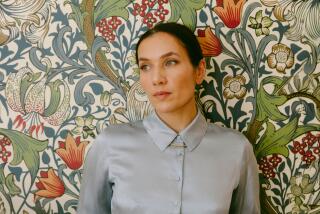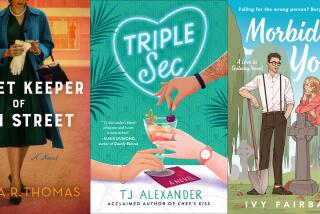It’s Everywoman’s Story of Loss, Love and Catalog Shopping
- Share via
It’s been said that “Food is the good girl’s sex.”
The corollary would be that shopping is the thin girl’s food--that which satisfies, nourishes and gives energy. For women who choose clothes as their drug of choice, catalogs are wily seducers.
You don’t think you need anything new to wear; your closets are overflowing with last year’s bounty. But then a catalog lands in the mailbox, a bundle of glossy photographs that seems to promise that you will be more stylish, more alluring than ever, if only you’ll pick up the phone and confess your desires to a customer service operative only an 11-digit call away.
From now until Christmas is prime catalog season. A glance at a recent crop made me wonder: Why do stores promote stuff that is so egregiously out of style? (Because there’s a demand and they can sell it.) I’m also amused by the secret language of catalogs. My favorite catch phrase is, “The clothes on these pages were designed to flatter a spectrum of sizes.” The meaningful translation of that is, “Even though this model has a perfect, fat-free body, you can wear this if you use your stationary bike only to hang clothes on, and you habitually finish a bag of Oreos and a quart of Ben & Jerry’s in the first half of a ‘Law and Order’ rerun.”
Under the direction of its brilliant executive vice president of creative services, Simon Doonan, Barneys New York has delivered a catalog, of sorts, that is a triumph of the soft sell. It’s called “The Love Book,” 45 pages of black-and-white photographs that illustrate a narrative of passion found and lost.
The impetus for the book was to give the customer interested in seeing what’s new in the store a different way of viewing the latest merchandise. Bonnie Solomon, vice president of advertising, and her staff complained that most fashion advertising left them cold. “A lot of our approach was driven by the way those girls shop and how they wear clothes,” Doonan said. “We spent a lot of time addressing the issue of ‘realness.’ ”
“The Love Book” shows a woman who looks real (she’s an actress, not a model) wearing clothes in real-life situations. “We wanted her to have confidence and vulnerability,” Pressman said. The layout isn’t cluttered with clothing descriptions and prices. A “continuity sheet,” a concept borrowed from the movies that includes a simple shot of what’s on each page, with prices and other pertinent information, is tucked in the back. “The Love Book” was mailed to 50,000 of Barneys’ best female customers; 150,000 more got just the continuity sheet.
*
Tim Walker, one of the new wave of post-heroin chic photographers, shot “The Love Book” on the streets of New York, using improvisation much as his countryman, film director Mike Leigh, does. “When we were choosing someone for this project, we all responded to Tim’s work, because it had a sweetness. He has a poetic sensibility,” Doonan said.
In contrast to conventional catalogs that feature clothes against sterile backgrounds, trumpeting designers’ names on royal banners spanning the page, the pictures in “The Love Book” combine important designers, up-and-comers and accessories the way women do, and favorite things reappear. “Everything is treated to the same level of importance,” Doonan said.
Catalogs like J. Crew have simulated scenes of models at a clambake or playing touch football, but they’re invariably happy beauties and always the picture of perfection. Alice, the protagonist of “The Love Book,” wears a velvet dress to the movies because, in the context of the story, she follows her heart and doesn’t always have it all together.
Barneys knew it had touched a nerve when women came into the store, clutching the continuity sheet and saying, “I want to look like that.” Said Solomon: “That’s different than ‘I want the red sweater in the catalog.’ ”
Barneys’ charming ode to the romance of living in the moment and dressing for it is entertaining, informative, even moving. I expect to hear any day that the movie rights have been optioned.






